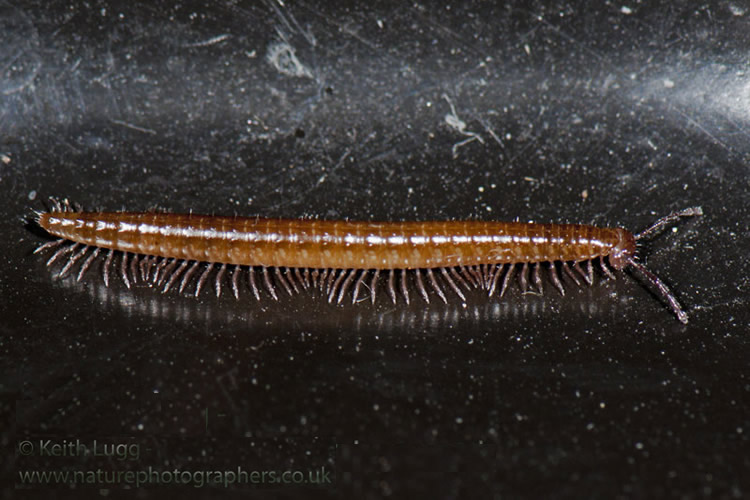Chordeuma proximum Ribaut, 1913
Status:
GB IUCN status: Least Concern
ID Difficulty
Identification
A brown millipede, to 13mm in length, with the eye comprising an almost equilateral triangular patch of ommatidia (in Melogona species the eye comprises an acute triangular patch). This species is identical in appearance to the rare Chordeuma sylvestre and the two can only be separated by examination of male gonopods (female and immature specimens cannot be identified).
Distribution
This species has a distinct south western distribution in Britain with single records from Cumbria, NE Yorkshire and the Isle of Rum, Inner Hebrides. There is evidence that the millipede has been introduced at two of these northern locations. It may also have been introduced to some, if not all, of the sites in the north of Ireland.
Elsewhere in Europe this species has been found only in France and shows a classic Atlantic distribution. Unlike in Britain, its range in France lies to the west of that of C. sylvestre although they overlap in Normandy (Kime, 2001).
Habitat
Analysis of the habitat data suggests a strong association with woodlands and Kime (2001) describes it as a typical woodland animal in France. A strong association with coastal sites is suggested also but such a link is not apparent in France and may be an artefact caused by the south western distribution in Britain. Kime (1990a) associated this species with acidic sands or loams. Those records providing data on soil factors support a possible link with acidic soils (67% of records) and with loams (55% of records) but there is insufficient evidence to confirm strong associations and there is no evidence of a link with sandy soils.
Phenology
It is an annual species in the south although Blower (1985) suggests it may have a two year life cycle further north in the Forest of Dean. Adults are found most frequently in the winter (Read, 1988) but have been recorded from September through to June.
This species account is based on Lee (2006).
Links
MilliBase - Global catalogue of Millipedes: https://millibase.org/aphia.php?p=taxdetails&id=935262






